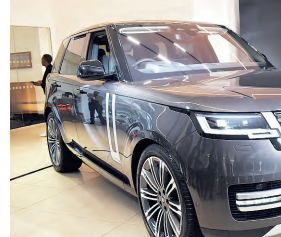
Kenya’s automotive industry recorded a 6.1 per cent drop in new car sales for the year to October, industry data shows, signaling a challenging business environment as buyers continue to prefer cheaper used imports.
This is on the back of high interest rates in the first half of the year where Central Bank of Kenya (CBK) benchmark lending rate went up to 13 per cent, with Commercial banks average lending rates soaring to 16.85 per cent in June 2024 from 14.64 per cent in December last year.
The high interest rates translated to high borrowing costs at a time businesses and households have been struggling with high taxes and thinning pay slips.
Between January and October, the 11 major dealers in the country sold 9,093 new units (zero millage vehicles), 591 vehicles short of the 9, 684 sold in a similar period in 2023, data by the Kenya Motor Industry Association (KMIA) indicates.
The dealers sold 936 units in October compared to 969 vehicles same month last year. Isuzu East Africa retained its market lead with a share of 47 per cent as it sold 4, 245 units in the 10 months, followed by CFAO Motors Kenya (formerly Toyota Kenya) which merged with DT Dobie last year, which sold 3,036 vehicles, 33.3% of the total industry sales.
Other notable sales were by Simba Corp ( 861 units) and Tata which sold 336 units.
The two accounted for 9.5 per cent and 3.7 per cent market share, respectively. New car sales have been declining for the third year in a row, with banks charging interest rates as high as 25 per cent for car financing.
Isuzu East Africa managing director Rita Kavashe attributed the decline to mainly reduction in procurement by government who is a key buyer.
“Interest rates went up 20 per cent making it difficult for some customer to buy new product. Although they are beginning to come down to 18 per cent, we see an increase in enquiries,” she told the Star.
There is also the aspect of pending bills, she noted, where most customers in the construction sector and other areas have not been paid for works done.
“This cash flow challenge has made some delay in execution of works thus affecting procurement of new project vehicles. We see construction beginning to pick and demand for raw materials such as sand cement and general construction materials beginning to pick and this could hold as we approach 2025,” Kavashe said.
Isuzu had projected easing of showroom prices and a stronger performance as the shilling gained against the US dollar which had late last year made imports costly when it hit Sh160 to the dollar.
It is currently averaging Sh129. During the period, trucks dominated the type of new vehicles sold in Kenya where a total of 3,148 units were bought followed by pick-ups, both double and single cabin which totaled 2,525. Buses (small, medium and large) totaled 1,503.
These categories are mainly used in the manufacturing, transport, agriculture, construction and retail sectors, where some have been struggling with the ratio of gross non-performing loans (NPLs) in the country closing at 16.7 per cent in August 2024, compared to 16.3 per cent in June.
“Increases in NPLs were noted in the transport and communication, personal and household, trade, real estate and manufacturing sectors,” CBK governor Kamau Thugge noted in his latest Monetary Policy Committee brief.
The projected growth in 2024 has been revised to 5.1 per cent from 5.4 per cent.
Meanwhile, Kenyans continue to prefer second-hand imports which come with a lower price despite heavy taxation, with some units asking price going as low as Sh800,000 compared to new cars whose starting price is above Sh2.5 million.
According to the Car Importers
Association of Kenya (CIAK), locally assembled units are expensive by
more than Sh600,000.

![[PHOTOS] Kindiki inspects works at regional centre in Kwale](/_next/image?url=https%3A%2F%2Fcdn.radioafrica.digital%2Fimage%2F2025%2F04%2Fc68aa00b-39bc-4214-bafe-80e8e38b1e60.jpg&w=3840&q=100)









